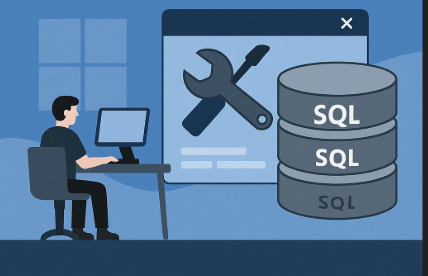Why Every AV Integrator Needs AV Rack Design Software in Their Toolkit

Strong 8k brings an ultra-HD IPTV experience to your living room and your pocket.
In the rapidly evolving world of audiovisual (AV) technology, the complexity of system installations has increased dramatically. From corporate boardrooms to concert venues, houses of worship, education facilities, and broadcast studios, AV systems are no longer simple plug-and-play configurations. They involve multiple interconnected components housed within structured frameworks—often AV racks—that require careful planning, organization, and documentation.
For AV integrators, efficiency, precision, and clarity are paramount. This is where AV rack design software comes into play. This specialized software empowers professionals to plan, design, and document AV racks accurately and efficiently, helping them avoid costly mistakes, reduce installation time, and provide a higher level of service to clients.
In this blog, we will explore why AV rack design software is essential for every AV integrator, the core benefits it brings, key features to look for, and how adopting the right software can transform your AV projects from complicated puzzles into streamlined successes.
The Growing Complexity of AV Installations
AV systems today are incredibly sophisticated, integrating video, audio, networking, control systems, and power management. The AV rack is the heart of these systems—a centralized point housing amplifiers, switchers, processors, power supplies, network switches, and more.
Without precise planning and documentation, an AV rack can become:
- A tangled mess of cables
- Difficult to troubleshoot and maintain
- Prone to overheating or power issues
- Confusing to install, especially for teams
Traditional manual methods of rack design—hand sketches, spreadsheets, or generic CAD drawings—can lead to oversights and errors. The margin for error is low, and rework or downtime can quickly increase project costs.
What is AV Rack Design Software?
AV rack design software is a specialized tool that enables AV integrators to digitally design, visualize, and document AV equipment racks. These tools are tailored for AV-specific needs, offering libraries of AV components, drag-and-drop interfaces, automatic cable routing, rack elevation views, and collaboration features.
Unlike generic CAD software, AV rack design software often includes:
- Device-specific symbols and part libraries
- Integration with system design and signal flow diagrams
- Rack unit (RU) positioning with height constraints
- Cable management and labeling tools
- Export and sharing options tailored for AV projects
Why AV Integrators Need AV Rack Design Software
1. Prevent Costly Cabling Mistakes
Incorrect or messy cabling can cause signal degradation, equipment failure, or dangerous electrical issues. Using AV rack design software helps integrators plan cable runs, verify compatibility, and assign labels, preventing errors that could cost thousands in troubleshooting and repairs.
2. Save Time and Increase Efficiency
Designing racks manually is time-consuming. Software automates many repetitive tasks, such as calculating rack space, routing cables, and generating BOMs (Bills of Materials), enabling integrators to complete designs faster and focus on installation quality.
3. Improve Collaboration and Communication
Modern AV projects often involve multiple stakeholders—engineers, installers, consultants, and clients. AV rack design software facilitates collaboration by sharing up-to-date diagrams and documents, avoiding miscommunication and costly on-site changes.
4. Enhance Professionalism and Documentation
Accurate, clear, and professional documentation reflects well on your business and reduces misunderstandings with clients and subcontractors. Detailed rack layouts and cable schematics also simplify future upgrades or troubleshooting.
5. Plan for Thermal and Power Management
Overcrowded racks lead to overheating and power issues, risking equipment damage. Many AV rack design tools incorporate thermal analysis and power budgeting features to optimize rack layout and ensure system reliability.
6. Standardize and Scale Your Projects
With templates and reusable libraries, AV rack design software allows integrators to standardize their designs across projects, increasing consistency and quality, which is essential when scaling operations or working across multiple sites.
Key Features to Look for in AV Rack Design Software
If you’re considering adding AV rack design software to your toolkit, here are some features to prioritize:
- Comprehensive Device Libraries: Access to manufacturer-specific equipment icons and specs.
- Rack Elevation View: Visualize vertical rack space and plan device placement by rack units (RU).
- Cable Management: Tools for mapping and labeling cables, with color coding and connector types.
- Signal Flow Integration: Link rack design with overall system signal flow for holistic project views.
- Collaboration Tools: Cloud sharing, version control, and real-time editing for teams.
- Thermal & Power Analysis: Plan airflow and power draw to avoid overheating and overloads.
- Export Options: Generate professional PDF reports, schematics, and BOMs for client deliverables.
- AI Assistance: Some advanced platforms offer AI-based recommendations and auto-routing.
Popular AV Rack Design Software Solutions
Here’s a glimpse at some industry-recognized tools that AV integrators rely on:
XTEN-AV: Purpose-built for AV professionals, offering AI-powered design automation, comprehensive device libraries, and cloud collaboration.
D-Tools System Integrator: Integrates rack design with project management and estimating.
AutoCAD with AV plugins: For those who prefer a powerful CAD environment with AV customization.
Visio: Popular for creating network and rack diagrams with moderate customization.
Real-World Case Study: How AV Rack Design Software Transformed a Project
Consider a recent corporate boardroom AV installation with multiple 4K sources, distributed audio, and networked control. Using manual methods, the integrator faced repeated cabling errors, incorrect device placement, and significant rework.
By adopting AV rack design software, they were able to:
- Visualize the entire rack in 3D, optimizing space and airflow
- Plan exact cable lengths and connector types to reduce waste
- Generate professional documentation that aligned all teams
- Cut installation time by 30%, saving labor costs and client downtime
How to Get Started with AV Rack Design Software
- Identify your needs: Consider project scale, team size, and specific AV equipment.
- Evaluate software options: Test free versions or demos to find the best fit.
- Train your team: Invest time in mastering the tool’s features.
- Build your device library: Include frequently used equipment for faster design.
- Create templates: Standardize common rack setups to speed up future projects.
- Collaborate early: Involve stakeholders during the design phase to catch issues upfront.
Conclusion
As AV systems grow more complex and client expectations rise, AV integrators must leverage technology to stay competitive and efficient. Incorporating AV rack design software into your workflow is no longer optional—it’s essential.
By improving accuracy, enhancing collaboration, preventing costly cabling mistakes, and streamlining installation, this software becomes a cornerstone of professional AV integration.
Equip yourself with the right AV rack design software today and transform how you design, document, and deliver AV solutions tomorrow.
Note: IndiBlogHub features both user-submitted and editorial content. We do not verify third-party contributions. Read our Disclaimer and Privacy Policyfor details.







